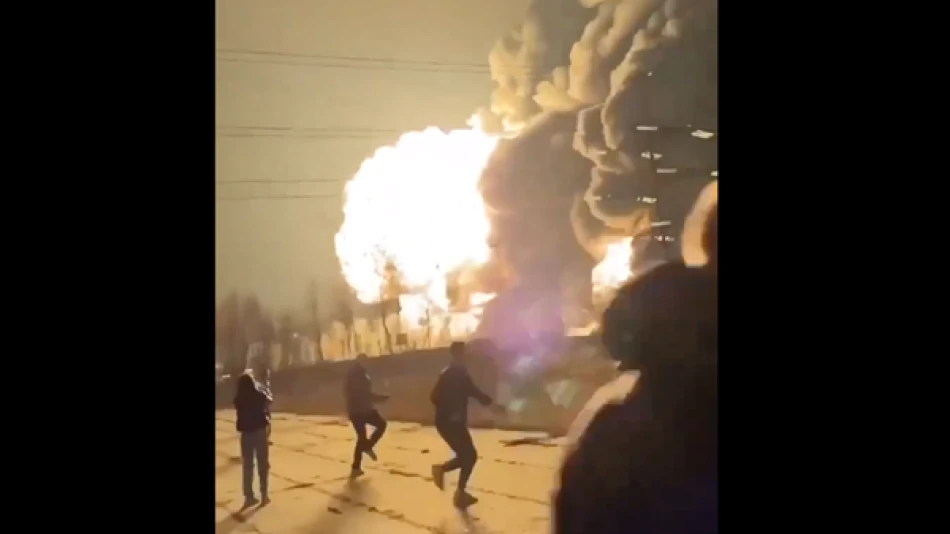
Ukraine Strikes Two Russian Oil Facilities, Disrupting Energy Infrastructure
Ukraine Escalates Energy War with Mass Drone Strikes on Russian Oil Infrastructure
Ukraine launched its most extensive drone assault on Russian energy facilities in recent months, targeting oil refineries and storage depots across eight regions Friday night into Saturday. The coordinated attack represents a significant escalation in Ukraine's strategy to cripple Russia's energy sector—the economic backbone funding Moscow's war machine.
Strategic Targets Hit Across Russian Territory
Ukrainian forces confirmed strikes on the Ryazan oil refinery, sparking fires at the facility located southeast of Moscow. The attack demonstrates Ukraine's growing capability to project force deep into Russian territory, with the Ryazan facility sitting roughly 200 kilometers from the capital.
Separately, Ukrainian drone units targeted the Aananfti Product oil storage facility in the Voronezh region, according to statements posted on Telegram. The facility represents critical infrastructure in Russia's energy supply chain, handling petroleum products for both domestic consumption and export markets.
Russian Air Defenses Overwhelmed
Russia's Defense Ministry claimed its air defense systems intercepted or destroyed 112 drones across eight regions—a figure that, if accurate, would mark one of the largest single-night drone operations of the conflict. However, the successful strikes on energy infrastructure suggest Ukrainian forces are adapting their tactics to overwhelm Russian defensive capabilities through sheer volume.
Energy Infrastructure as Economic Warfare
Ukraine's systematic targeting of Russian oil facilities reflects a calculated strategy to strike at Moscow's primary revenue source. Russia's energy exports generate hundreds of billions in annual revenue, much of which funds military operations in Ukraine. By disrupting refining and storage capacity, Ukrainian forces aim to reduce both domestic fuel supplies and export potential.
This approach mirrors successful wartime strategies used in previous conflicts, where attacking enemy fuel supplies proved more effective than targeting military assets directly. The strategy also carries psychological impact, bringing the war's consequences to Russian territory and potentially affecting civilian support for the conflict.
Implications for Global Energy Markets
While individual attacks may have limited immediate impact on global oil prices, the sustained campaign against Russian energy infrastructure introduces volatility into markets already strained by geopolitical tensions. Russia remains a major global oil producer, and any significant disruption to its refining capacity could affect regional fuel supplies, particularly in markets dependent on Russian petroleum products.
The attacks also demonstrate Ukraine's evolving military capabilities, with increasingly sophisticated drone technology enabling precision strikes at extended ranges. This technological advancement has implications beyond the current conflict, potentially reshaping how nations approach asymmetric warfare and infrastructure protection.
Escalation Dynamics
The intensification of attacks on Russian energy infrastructure signals Ukraine's commitment to expanding the conflict's geographic scope. Rather than limiting operations to contested border regions, Ukrainian forces are increasingly targeting economic and industrial centers deep within Russia.
This escalation pattern suggests the conflict is entering a new phase where both sides are expanding their definition of legitimate military targets. The success of these operations may encourage further attacks on Russian infrastructure, potentially prompting Moscow to respond with its own escalatory measures.
Most Viewed News

 Layla Al Mansoori
Layla Al Mansoori






